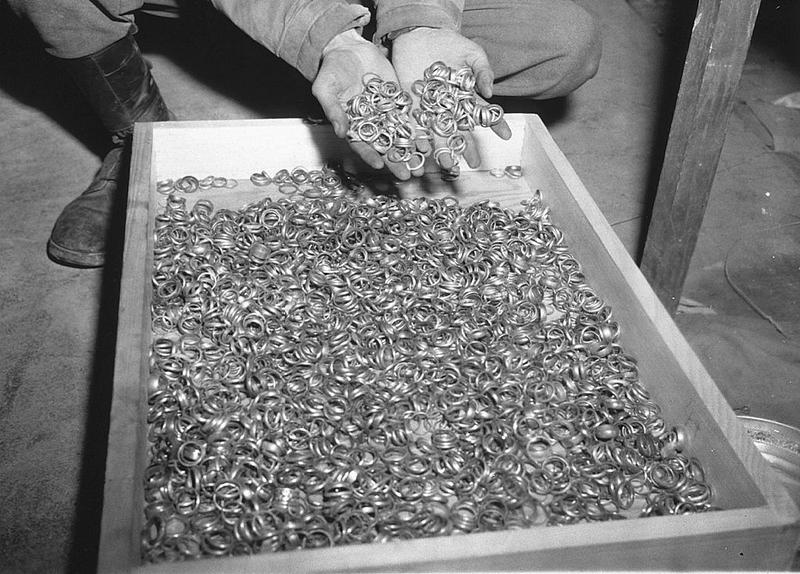Nazi Gold, The Truth Behind The Mystery: Where Is It Now?
By | March 3, 2021

The legend of Nazi gold is a favorite topic among conspiracy theorists and History Channel talking heads. Basically, the story goes that the Nazis accumulated a wealth of gold during World War II and hid it in various places to keep it from falling into enemy hands. But just where did the gold come from, and where is it now?
Nazi Gold
The Nazi Party got their hands on as much gold as possible to fund their war effort, and almost none of it was acquired by legal or ethical means. They repossessed the assets of Jews and even pried gold fillings out of the mouths of concentration camp victims, but they knew the largest caches of gold were sitting in banks, so when they invaded a country, one of their first moves was to empty its central bank of its gold reserves. Desperate to keep their gold supply safe from the Nazis, some people, including the Vatican, secretly sent their gold to the United States for safekeeping. Most historians believe the Nazis deposited much of their gold in Swiss bank accounts, but since such transactions are private, it's not known exactly which nations helped the Nazis convert their gold into cash.

The Nazi Gold Reserve
Some of the gold that the Nazis pilfered, however, was kept in a central gold deposit controlled by the Germans. In 1945, two displaced French women led U.S. military police to the nearby Merkers Salt Mine, which they'd heard was a hiding place and where the officers found thousands of bags of gold bars, coins, and rings, but historians believe that there is still much more Nazi gold out there. Up to $8 billion of gold in today's money might be hidden in the banks of Europe, most likely the Swiss National Bank, which was the continent's largest gold distribution center at the time. At the end of the war, the Allied forces tried to seize Nazi assets, but Switzerland wasn't having it. The 1946 Washington Agreement left the Allies with only about 12% of the stolen Nazi gold, and years later, it was learned that some of the Nazis' accounts were liquefied to repay Swiss nationals whose assets were seized by Nazis.

Where Is It Now?
In 1997, a top secret report from 1946 that claimed the Vatican had confiscated millions of dollars in Nazi gold was declassified. Subsequent reports indicated that some of it was deposited in the Vatican's Swiss bank accounts and eventually transferred to Vatican City's Institute for Works of Religion, otherwise known as the Vatican Bank, while some was kept right in the Vatican. It was even claimed that the transfer was conducted by the Franciscan Order. The neutral Portugal also got its hands on quite a bit of Nazi gold, second only behind Switzerland, having been one of the biggest centers for tungsten production who sold metal to both the Allied and Axis forces. Finally, in 2000, a French bus driver discovered a set of documents at the Canfranc International Railway station that revealed more than 80 tons of Nazi gold was shipped via trains. Where it was going and where it is now is the subject of much speculation.

